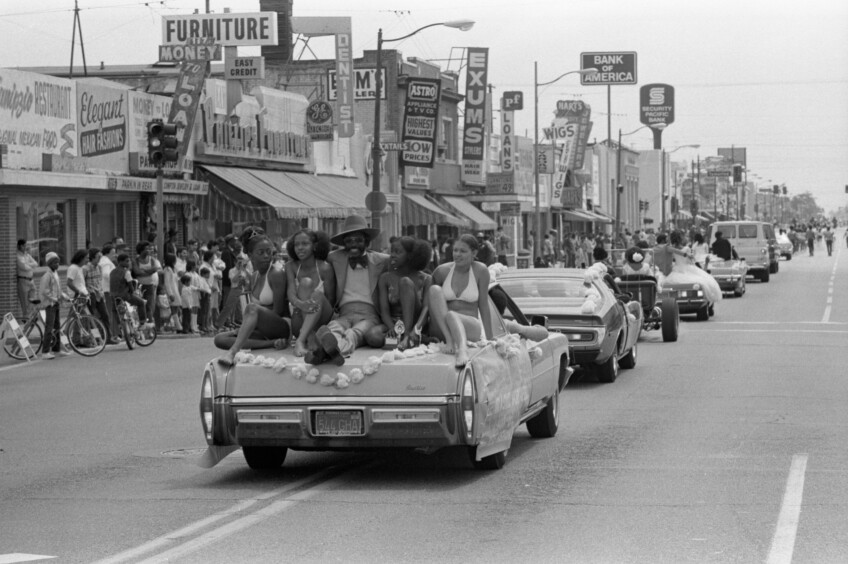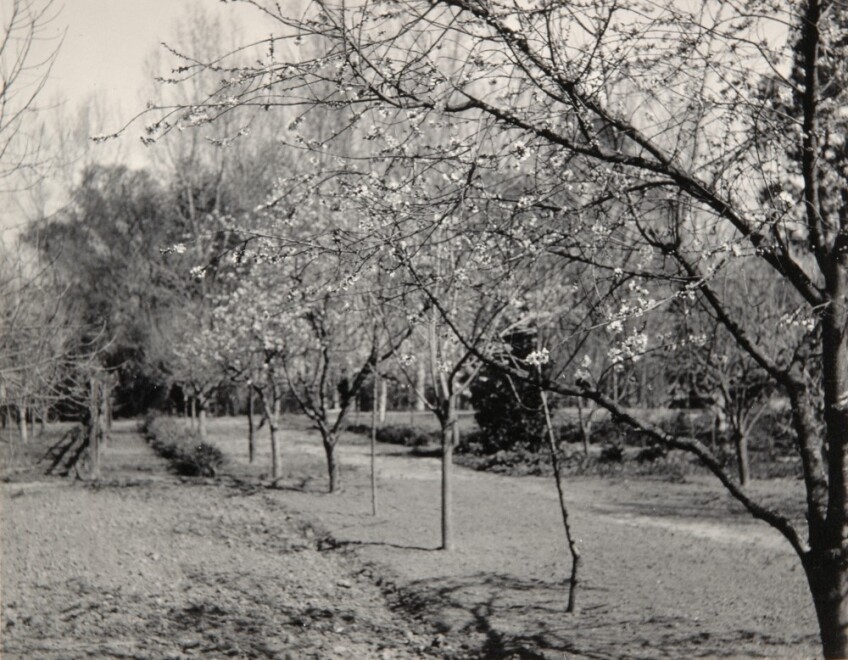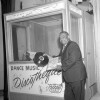'You Had to be There': Compton in Literature and Memory

The following essay is part of "Compton: Arts and Archives," which explores the history, arts, and culture that make the “Hub City” an arts city. It is cross-published from Sēpia Collective in response to its "Reading the City" conversations with Compton artists. Edited by Jenise Miller.
There are ways, albeit unconsciously, that writers first begin committing place to memory. It may be the number of steps it takes to get from home to school. It may be the roll and rhythm of a summer house party, spilling out into a yard. It may be the weekend scene at the swap meet and absorbing the voices, wares and wardrobe, down to the way the women have parted and set their hair, the curlers — as poet Jenise Miller recalls — studiously matching their outfits. I see canary yellow, foam green, bubble-gum pink. Intentional articulation of personal style that calls up time and place.

The specificity of Miller's remembrance is a doorway, and in many ways 2020's roundtable discussion, "Reading the City: Compton and the Literary Imagination," hosted by the Sēpia Collective, was like revisiting a vanished block that you've retained down to the fruit-bearing trees, hummingbird feeders and the snapdragons in the gardens.
We, as Black people born and raised in what is now called South Los Angeles, are called in to react to a perception, or explain or contextualize, the "doom and gloom." Contrary to popular perception, poet Robin Coste Lewis remarked, "I can't think of a more beautiful way of growing up," considering the imprint of time and place. "A ribbon" of childhood memories flash by: "tents in the backyard," "playing in the cemetery." All of it stored away. But with the recollection of the bounty she expressed regret, chased with frustration, about the too few times she'd been in community, to share this particular collection of memories before; how important it has been to find one's tribe. "Our answers are so long," said Lewis, "because the conversation is so needed."
This intimate dialogue, featuring Compton-raised writers — Lewis (former Los Angeles poet laureate), Amaud Jamaul Johnson (poet, professor and National Book Critics Circle finalist) and Miller (a poet and urban planner of Panamanian descent) who also served as co-host, along with Rosalind McGary, founder of the Sēpia Collective — was an attempt to not simply correct but expand a multidimensional narrative.
Trenchant and far-ranging, the writers wound us through physical topography, mythology and Compton's various public and private narratives. Even the rhythm of the back-and-forth felt familiar: One memory, image, street name, calling up another recollection from a different angle, a different decade. What these poets/artists/thinkers made clear is that the journey of making a place legible, especially when a "standard narrative" appears "indelible," is a committed practice of writing around and over assumptions.
Compton lives large in pop culture and many folks far outside those boundaries believe that they fully comprehend the place based on what's beamed out — in gangsta rap (a "performative Compton" as Johnson spun it) or slanted mainstream media news that parachutes in to report the "when it bleeds it leads" headlines, and not the everyday homegrown richness.
This conversation was a necessary corrective, a push-back, that turned over and exposed cliché, shallow rhetoric and lazy fact-finding. What blooms in the shadow is richness.
As an Angeleno who spent my early years growing up and going to school in the wide swath of the L.A. County grid, south of the I-10, in what was then referred to as "South Central L.A." I too intimately understood that we lived in a world that possessed a vivid counter narrative. What the outside world "understood" about us had nothing at all to do with our day-to-day experiences at home, at school, at work or at leisure. As well as police violence, as both Johnson and Lewis point out, we battled the terrors of euphemism — words matter — in that even the names of the places where we lived signified danger or netherworlds or "lack."

This is a point that all of the participants touch on. Where the outside world saw dearth, we saw a richness that couldn't be easily translated. Both Lewis and Johnson present memories of a Compton that is both urban and wild. Lewis reflected, pausing to add that she might date herself, but recalls when her neighbors raised roosters in their yards. It continues, versions of self-sustaining rituals: People farmed on their land, kept horses and chickens.
Johnson turned to elegiac lines that call up lost expanses with an incantation: "Who among us remembers . . . Fruit Town ... the wig shops … the gutted lots" — the things that were the community's . . . that were "ours." He also points to the five-year shifts in sense of place, how one collective memory cedes to another as the population reshuffles itself, as housing covenants are broken and white flight takes momentum, and the community is remade once more.
Telling one's own story, in one's own language and style, is born from this kind of careful absorption, watching and recording, listening to elders stories about what once stood here, who once lived there and what grew out of the soil — the bougainvillea and the citrus and the new way of thinking about different ways of carving one's place in the world.
This — one's environment — is the site of inspiration. This is the soil from which artists, no matter their origins, mine their inspiration. Compton is no different. In certain ways, Compton was "our Harlem," Johnson recalled, "It was our Chocolate City."
Known as "Hub City," Compton was — and is— a connector. If you look at a map it is positioned as the geographical center of Los Angeles County and, like much of south Los Angeles County, was the shining point of destination for many Great Migration families traveling from Louisiana and Texas. Growing up here in the '70s, I could hear this in their stories, in their voices, as Lewis points out about Louisiana in particular, in the Louisiana Creole syntax that breaks and reforms English into a language of their own, new regionalisms, new ways of seeing and understanding place. These proud people, Lewis makes clear, weren't simply travelers, they were survivors. The horrors that they witnessed in their particular Jim Crow Souths remained with them; some of them took those episodes to their deaths, never speaking of them. But what they passed on to my generation was a sturdy example of what it meant to be not just a member of a community, but a participant — the importance of these connections, rituals, rites of passage, even thousands of miles away from home.
As Lewis vividly underscored, "The Great Migration didn't happen for pleasure. They escaped… They were deeply melancholy [for] their home." Their loss of home and the safety of community is why they worked so hard at creating bonds here on new soil.
This notion of melancholy felt familiar and while I didn't grow up in Lewis's home or in her neighborhood, we are linked. Both daughters of Great Migration Louisiana families. My mother grew up in New Orleans and that wistfulness permeated our present. We had both here in California but it took time, effort and determination to build it so far away from home. "I'm melancholy for Blackness, a particular sort of Blackness," said Lewis.
Years ago, when I was on a reporting assignment with a photographer, also Black, but from the East Coast, I remember him announcing as we were packing up after the interview and photoshoot we had in Compton: "Man! L.A. feels so Southern..." I realized that I'd never quite thought to put it that way. It was just how I understood Black Los Angeles, that this was our story — both Southern and Western and in pockets of the city where we could let our guard down, and be all of the layers of who we are. This is why the current sweep of gentrification is so heartbreaking: Seeing what was so hard won and carefully built by the generations preceding us, dismantled and "refreshed" and redesignated in real estate terminology that strips away our forebears imprint, is nothing short of violence. It's melancholy turned to mourning. As Miller noted, while we've witnessed the "promise and possibility" something keeps "pulling us back" — "Black people running things?" Building and directing their future? To a system built on white supremacy: "That's the problem."
This speaks to the necessity and power of counter narratives, where residents see metaphorical "flowers" where there's starkness, possibility where some only see dross. What this conversation italicized, once more, is how important it is to have venues and platforms for the stories that don't confirm expectations but break them.






